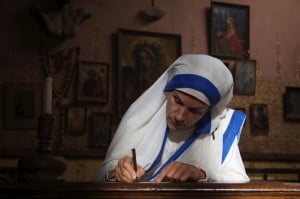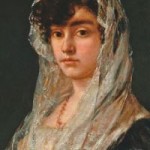He’s a true “Renaissance Man.” Well, not really, since he lived before the Renaissance even occurred—but St. Luke, whose feast we celebrate on October 18, was certainly a man of many talents. Luke has been called the patron of artists, physicians, surgeons, students and butchers.
 Most importantly, Luke was an evangelist—one of the four writers of the Gospels, a historian who gave us, for example, the infancy narrative, sharing the story of Jesus’ birth in Bethlehem and his early childhood in Nazareth. Luke also wrote the Book of Acts, recounting stories of the Christians’ faith and courage in the years immediately following the Resurrection, in the earliest days of the Church.
Most importantly, Luke was an evangelist—one of the four writers of the Gospels, a historian who gave us, for example, the infancy narrative, sharing the story of Jesus’ birth in Bethlehem and his early childhood in Nazareth. Luke also wrote the Book of Acts, recounting stories of the Christians’ faith and courage in the years immediately following the Resurrection, in the earliest days of the Church.
But today, let’s look at Luke the artist. A young man when Christ died, Luke remained close to Jesus’ mother Mary; and it is believed that Mary herself told Luke stories about Jesus’ birth in a stable in Bethlehem, about the flight into Egypt, about Mary’s fear when the Child Jesus was lost in the Temple.
As Mary talked, Luke wrote—or sometimes, perhaps, he sketched and painted. There exist several paintings in Italian churches which are purported to have been painted by the artist Luke. There are also several paintings of Luke painting—that is, paintings done by later artists depicting Luke before the Blessed Virgin, brush in hand.
One of the most famous paintings attributed to Luke is the Black Madonna of Częstochowa. This revered icon (above) is housed at the Jasna Góra Monastery in Częstochowa, Poland.
 Another famed painting by Luke is the Madonna Nikopeia (left) in Venice’s Basilica di San Marco. I’ve actually visited that basilica—but despite its great beauty and the great artworks displayed there, the thing that sticks most in my memory is the fishy smell! With Venice gradually sinking below sea level, the piazza is frequently flooded with sea water; and pilgrims stay dry as they approach the basilica by walking along an elevated wooden platform.
Another famed painting by Luke is the Madonna Nikopeia (left) in Venice’s Basilica di San Marco. I’ve actually visited that basilica—but despite its great beauty and the great artworks displayed there, the thing that sticks most in my memory is the fishy smell! With Venice gradually sinking below sea level, the piazza is frequently flooded with sea water; and pilgrims stay dry as they approach the basilica by walking along an elevated wooden platform.
Anyway, according to legend, Luke painted this portrait of Mary from life, with her actually posing—perhaps telling stories about Jesus as she sat quietly. One version of the legend says that Luke created this particular painting on a wooden tabletop which had been constructed by Joseph and Jesus. Mary infused the painting with her blessings and grace, turning it into a miracle-working icon that would transmit her power and love through the centuries.
Paintings of the Painter
 Here is a sixteenth century work by Jan Gossaert. Titled St. Luke Painting the Madonna, it is housed in Vienna’s Kunsthistorisches Museum.
Here is a sixteenth century work by Jan Gossaert. Titled St. Luke Painting the Madonna, it is housed in Vienna’s Kunsthistorisches Museum.
 This is Luke Displaying a Painting of Mary by the Italian Baroque painter Giovanni Francesco Barbieri (1591-1666), best known as Guercino. Barbieri lived from 1591 to 1666. His name “Guercino” is Italian for squinter—so named because he was cross-eyed.
This is Luke Displaying a Painting of Mary by the Italian Baroque painter Giovanni Francesco Barbieri (1591-1666), best known as Guercino. Barbieri lived from 1591 to 1666. His name “Guercino” is Italian for squinter—so named because he was cross-eyed.










